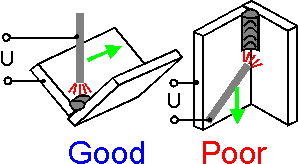 Weldability is the ability of materials (or structures) to form a strong defect-free weld. Poor weldability results in hot cracking, cold cracking or lack of fusion. Preliminary heating of base parts (preheating) decreases hot cracking. The best weldability can be obtained in the gravity position. Weldability depends on materials.
Weldability is the ability of materials (or structures) to form a strong defect-free weld. Poor weldability results in hot cracking, cold cracking or lack of fusion. Preliminary heating of base parts (preheating) decreases hot cracking. The best weldability can be obtained in the gravity position. Weldability depends on materials.
This list is in order of decreasing weldability:
Steel 0.2%C, cold-rolled
Stainless steel
Aluminum alloy 7075-T6
Ductile iron
The melting points of aluminum alloy and steel differ by more than 500 degrees Celsius. The metals cannot be melted together.
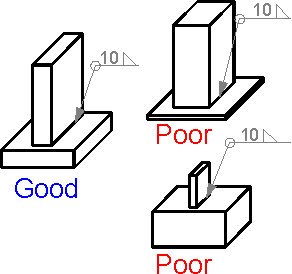 To form a defect-free tee-joint it is better to use similar thickness of welded parts. An all-around welding of two massive (rigid) parts results in hot cracking.
To form a defect-free tee-joint it is better to use similar thickness of welded parts. An all-around welding of two massive (rigid) parts results in hot cracking.
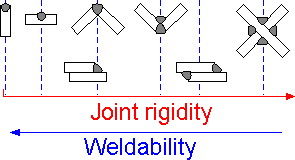 The more rigid a welded structure, the more susceptible to hot cracking. The specimens are shown in increasing order for susceptibility to hot cracking and decreasing order of weldability.
The more rigid a welded structure, the more susceptible to hot cracking. The specimens are shown in increasing order for susceptibility to hot cracking and decreasing order of weldability.
 There are special tests to estimate weldability of materials:
There are special tests to estimate weldability of materials:
1. Y-groove restrain cracking test for heavy plates with a new weld in the center. Hot cracking in the new weld is under investigation. This test helps to estimate susceptibility to hot cracking.
2.The implant method for studying weldability and determining susceptibility to cold cracking.
3.Tension of a machined specimen for studying susceptibility to lamellar cracking.
8.1
There are some simple rules how to design a reliable welded structure. We mention a few of them here:
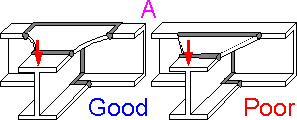 A. Keep welds away from zones of high stress concentration.
A. Keep welds away from zones of high stress concentration.
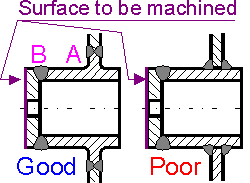 B. Keep welds away from surfaces to be machined.
B. Keep welds away from surfaces to be machined.
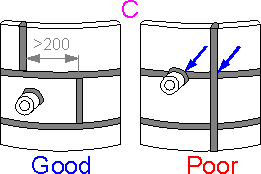 C. Don't make butt-weld intersections.
C. Don't make butt-weld intersections.
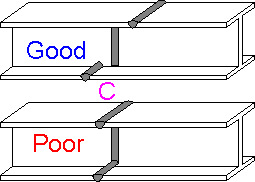 D. Place vertical walls where force is applied.
D. Place vertical walls where force is applied.
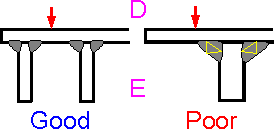 E. Choose proper weld size.
E. Choose proper weld size.
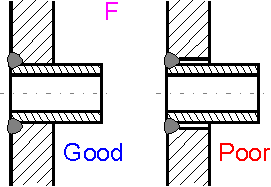 F. Avoid gaps.
F. Avoid gaps.
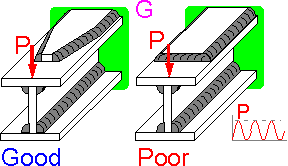 G. Don't use sharp rigidity transition in tensile flange.
G. Don't use sharp rigidity transition in tensile flange.
|
|
|
 2015-08-13
2015-08-13 293
293








